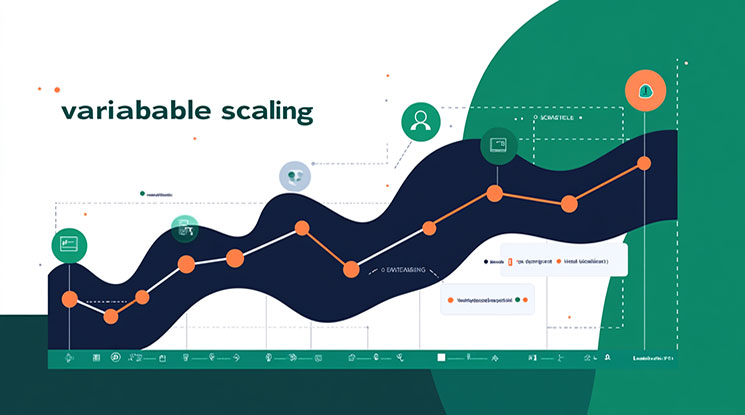REDEFINING WORKFORCE PRODUCTIVITY
AI AS A STRATEGIC GROWTH PARTNER
TL;DR: 📈
- AI workforce augmentation: helps UK firms overcome capacity gaps by enhancing, not replacing, human roles.
- Professionals get more done faster with AI support across admin tasks, decision-making, and content creation.
- Smarter teams reduce burnout, improve output, and stay competitive without hiring more staff.
- Is your firm ready to scale while staying agile and compliant?
Smarter Scaling Starts Here: The AI Advantage for Professional Teams
British professionals are facing unprecedented workload pressures, with workers reporting symptoms of burnout due to long hours, tight deadlines and limited autonomy. This alarming situation reflects a fundamental challenge across UK business: the growing gap between workload demands and human capacity.
While traditional solutions involve either hiring additional staff, increasingly difficult in a competitive talent market, or accepting reduced output and quality, forward-thinking UK organisations are discovering a third path: workforce augmentation through strategic AI implementation.
The promise of this approach is compelling. For example, Deloitte’s finance division reported a 40 % productivity uplift after using its Zora “agentic AI” platform. Despite the output increase, error rates in routine processes typically decrease by some margin when AI systems support human professionals.

The Capacity Gap in Modern Firms
The productivity challenge facing UK organisations has changed significantly over the past decade. The traditional expectation that technology would automatically deliver efficiency has collided with the reality of growing digital complexity and expanding compliance requirements.
Financial services professionals now spend up to 41% of their working hours on administrative tasks rather than value-creating activities, according to a Cerulli Quantitative Update.
This capacity gap manifests in several problematic ways. Projects increasingly exceed their time estimates, leading to budget overruns and margin compression. Client service quality suffers as professionals rush through complex work to meet deadlines, and most concerningly, burnout and attrition rates continue rising.
Traditional responses to these challenges have proven inadequate. Hiring additional staff faces both budget constraints and a tightening talent market for specialised roles.
Process optimisation initiatives deliver diminishing returns as easily addressed inefficiencies have already been eliminated in most mature organisations. Technology tools aimed at specific tasks often create integration challenges and additional complexity without addressing the fundamental capacity constraints.
Our professionals face unprecedented information processing demands that no amount of conventional efficiency training can address. his is where AI augmentation fills the gap in being the most viable path forward.

How AI Augments Human Roles
Workforce augmentation through AI represents a fundamental shift in approach. Rather than viewing AI as a tool for automation or replacement, this perspective positions AI as an intelligent partner that enhances human capabilities across multiple dimensions.
This approach focuses on three primary modes of augmentation that address different aspects of professional work: task automation, decision support, and creative assistance.
Task Automation Bots
Task automation represents the foundation of AI augmentation, addressing routine processes that consume disproportionate time while adding limited value.
Unlike traditional automation that follows rigid rules, AI-powered task bots adapt to variations, handle exceptions intelligently, and learn from human guidance to continuously improve.
In financial services, document processing bots now handle everything from KYC verification to contract analysis with minimal human intervention. These systems identify relevant information across diverse document formats, extract key terms with contextual understanding, and flag genuine exceptions requiring human judgment.
Professional services firms now leverage similar capabilities for research synthesis, data gathering, and information organisation, tasks that previously consumed junior professional time without building meaningful skills

Decision Support Engines
Where task automation addresses routine activities, decision support systems augment human judgment in complex situations requiring analysis, pattern recognition, and contextual understanding.
These systems enhance professional decision-making by processing vast information sets, identifying relevant patterns, and surfacing insights that might otherwise may have remained hidden.
Compliance functions leverage similar capabilities to identify potential regulatory issues, assess risk patterns, and prioritise investigations based on sophisticated probability models.
Risk management teams use decision support engines to evaluate complex scenarios, stress-test assumptions, and identify potential vulnerabilities across portfolios or operations.
These systems enable more comprehensive risk assessment by processing more variables and scenarios than would be feasible through human analysis alone.
Content & Code Copilots
Perhaps the most transformative category of AI augmentation involves creative partnership systems that work alongside professionals to develop content, code, and communications more effectively than either could achieve independently.
AI copilots don't merely execute instructions but actively contribute to the creative process through suggestions, draft generation, and iterative refinement.
Content development represents a significant time investment across professional services. AI writing assistants now generate everything from initial draft reports to client communications, marketing materials, and internal documentation.
These systems adapt to organisational tone, integrate relevant data points, and provide structured starting points that professionals then refine and enhance with domain expertise.
Software development teams leverage similar capabilities through code copilots that suggest implementations, identify potential bugs, and automate repetitive coding patterns. These systems dramatically accelerate development cycles while reducing technical debt through consistent implementation approaches.
Visual content creation benefits from the same approach, with AI design assistants generating initial concepts, variations, and layouts that creative professionals then refine. This partnership allows exploration of more design alternatives in less time while maintaining creative integrity.

Cultural Adoption Playbook
The technical implementation of AI augmentation represents only half the challenge. Capturing full value requires thoughtful change management that addresses the human dimensions of adoption and integration. Successful UK organisations follow a consistent playbook that emphasises four key elements: executive sponsorship, pilot champions, purposeful upskilling, and transparent impact measurement.
Executive sponsorship establishes AI augmentation as a strategic priority rather than a departmental initiative. This leadership engagement ensures resource allocation, addresses cross-functional barriers, and positions augmentation as fundamental to competitive strategy.
Effective sponsors communicate a compelling vision of how augmentation enhances professional effectiveness rather than threatening roles or devaluing expertise.
Pilot champions provide essential ground-level momentum by demonstrating practical benefits within specific team contexts. These early adopters receive additional training and support to serve as internal experts and advocates who can address colleagues' concerns from a position of practical experience.
Successful organisations select champions from different seniority levels and functional areas to maintain diverse perspectives and broad influence.
Purposeful upskilling represents perhaps the most critical element of successful adoption. This goes beyond technical training to develop what the Oxford Internet Institute calls "AI collaboration skills", the ability to effectively direct, refine, and integrate AI outputs into professional workflows.
Leading organisations develop customised learning journeys for different roles, balancing technical understanding with practical application in domain-specific contexts.
Transparent impact measurement addresses the natural concern about how AI adoption affects performance evaluation and career progression.
Successful implementations establish clear metrics that focus on value creation rather than activity volumes, helping professionals understand how augmentation enhances their contributions rather than diminishing them. This transparency builds trust and reinforces the supportive nature of the augmentation strategy.

Metrics: Productivity vs Headcount Curve
Traditional business growth has followed a linear relationship between output and headcount, increasing capacity required proportional increases in team size, with corresponding growth in overhead, management complexity, and fixed costs.
AI augmentation fundamentally changes this relationship by enabling what economists call "variable scaling", the ability to increase output without corresponding headcount growth.
The productivity-headcount curve provides a valuable framework for measuring this transformation. Leading UK financial and professional services firms track three key metrics along this curve:
Leverage ratio (value created per professional), response elasticity (ability to handle demand spikes without quality degradation), and margin stability (maintaining profitability during growth phases).
Organisations implementing comprehensive AI augmentation typically experience a 1.9x to 2.7x improvement in leverage ratio within the first year, enabling them to deliver substantially more value with existing teams.
Response elasticity improves even more dramatically, with augmented teams demonstrating 3.5x to 4.2x greater capacity to absorb demand spikes without quality compromise compared to traditional approaches.
This elasticity proves particularly valuable in sectors with seasonal or market-driven demand fluctuations.
Margin stability represents perhaps the most compelling business benefit, as augmented teams maintain or improve profitability during growth phases rather than experiencing the temporary margin compression typically associated with expansion.
This stability stems from lower onboarding costs, reduced management overhead, and more efficient knowledge transfer compared to traditional scaling models.
Risk & Ethics Brief
Implementing AI augmentation carries both practical risks and ethical considerations that require thoughtful management, particularly in regulated UK industries. Leading organisations address these challenges through comprehensive governance frameworks that balance innovation with appropriate controls.
Data security represents the foremost practical concern, as augmentation systems often require access to sensitive information and work products. Best practices include tiered access models, private cloud deployments for sensitive applications, and continuous monitoring of data flows.
UK financial institutions typically implement augmentation within their existing security perimeters, ensuring alignment with regulatory requirements and internal controls.
Intellectual property and client confidentiality require particular attention in professional services contexts. Successful implementations establish clear boundaries regarding data usage, implement robust anonymisation protocols, and maintain appropriate ethical walls between client engagements. These safeguards ensure that augmentation enhances rather than compromises professional obligations.
Beyond these practical concerns, ethical considerations require thoughtful attention. Bias mitigation represents a critical priority, as augmentation systems may perpetuate or amplify existing biases if not properly designed and monitored.
Leading organisations implement continuous testing for fairness across demographic dimensions and decision contexts, to make certain that augmentation enhances rather than undermines commitment to equitable outcomes.
The UK's developing regulatory space for AI applications requires particular attention, especially in financial services and other regulated industries.
Forward-thinking organisations engage proactively with regulators, participate in industry standards development, and maintain comprehensive documentation of governance approaches. This proactive engagement positions them to adapt quickly as regulatory frameworks evolve.

The Path Forward
The implementation of AI workforce augmentation represents a fundamental reimagining of how professional work happens.
Organisations that approach this transformation thoughtfully stand to gain significant advantages in capacity, quality, and talent retention while positioning themselves for sustainable growth in an increasingly complex business environment.
Successful implementation begins with an honest assessment of current capacity constraints and clear identification of augmentation opportunities.
This discovery phase should involve frontline professionals rather than being directed exclusively from technology functions, so that solutions address genuine pain points rather than theoretical inefficiencies.
Strategic implementation typically begins with high-impact, low-complexity opportunities that build organisational confidence and capability. This incremental strategy allows for learning and adaptation while delivering measurable benefits that sustain momentum and executive support.
The most successful processes maintain balance between technical implementation and cultural adaptation, recognising that both dimensions are essential for sustainable improvements.
As your organisation considers its path toward AI augmentation, remember that the goal isn't about replacing human expertise, but enhancing it to create an environment where professionals focus their unique capabilities on truly value-adding activities while AI systems handle the routine, repetitive, and mechanical aspects of knowledge work.
This partnership approach delivers the dual benefit of improved business performance and more meaningful professional experiences.

Ready to Transform Your Team's Capacity?
The gap between workload demands and human capacity continues widening across UK business. If you successfully implement AI augmentation strategies you can gain a decisive advantage in this challenging environment, and you'll manage growing client expectations while protecting your most valuable asset: you're people.
More Capacity, More Clients, If You’ve Got the Right Funnel
Boosting team output is just step one. To fully capitalise, you need a marketing system that matches
your new capacity. We also build scalable, AI-enhanced lead generation and nurturing funnels
that keep your pipeline full, without adding to your headcount.